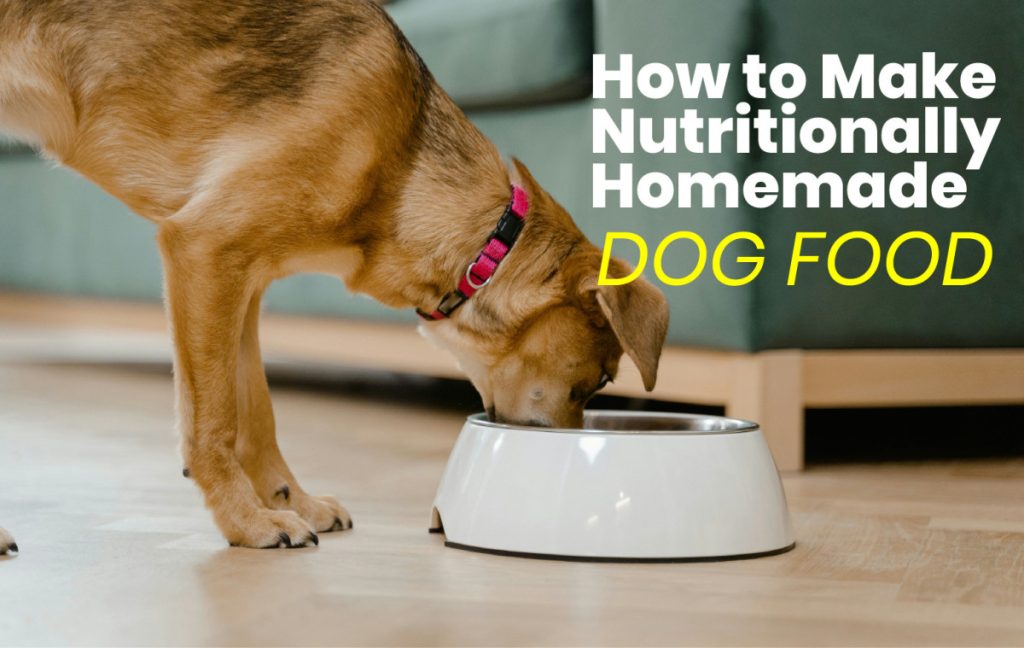
With growing concerns over commercial dog food ingredients, many pet owners are choosing homemade dog meals. But one of the biggest challenges is ensuring nutritional balance. While feeding your furry friend a fresh, home-cooked meal sounds ideal, it’s crucial to do it correctly. This article breaks down simple homemade dog food recipes, addresses common vet warnings (vet caveats), and answers the most frequently searched questions.
Why Consider Homemade Dog Food?
Top reasons dog owners go DIY:
- Avoiding preservatives and artificial ingredients
- Managing food allergies
- Customizing meals for picky eaters
- Saving money on high-end dog food brands
However, homemade doesn’t automatically mean healthy. Without the right balance of protein, fats, carbs, vitamins, and minerals, your dog could face nutritional deficiencies.
What Does a Nutritionally Balanced Dog Diet Include?
According to the Association of American Feed Control Officials (AAFCO), a balanced dog diet includes:
- Protein (meat, fish, eggs)
- Fats (chicken fat, flaxseed oil)
- Carbohydrates (rice, sweet potato, oats)
- Fiber (pumpkin, green beans)
- Vitamins & Minerals (canine multivitamin, bone meal, organ meat)
Vet Caveat: Dogs have different nutrient needs than humans. Simply feeding your dog table scraps or what you think is “healthy” can lead to problems like calcium deficiency, obesity, or heart disease.
Vet Caveats You Should Know
- Calcium Imbalance: Dogs need more calcium than phosphorus. Too much meat without bones or supplements can cause skeletal issues.
- Toxic Foods: Onions, garlic, chocolate, grapes, avocados, and certain nuts are dangerous for dogs.
- Overfeeding: Homemade food often lacks portion control. Overweight dogs are prone to diabetes and joint problems.
- Lack of Taurine: Certain breeds like Golden Retrievers and Cocker Spaniels are prone to taurine deficiency when on a grain-free homemade diet.
- Vet Tip: Always consult a veterinary nutritionist or use a dog diet calculator to ensure nutritional completeness.
3 Simple, Vet-Approved Homemade Dog Food Recipes
1. Chicken & Rice Balanced Meal
Ingredients:
- 1 cup cooked brown rice
- 1/2 cup cooked, chopped chicken breast
- 1/4 cup cooked carrots (chopped)
- 1/4 cup peas
- 1 tbsp plain pumpkin puree
- 1 tsp fish oil
Instructions:
- Mix all ingredients in a bowl.
- Serve once cooled.
- Store leftovers in an airtight container for 3 days.
Nutritional Tip: Add a canine multivitamin to ensure full coverage.
2. Beef & Sweet Potato Power Bowl
Ingredients:
- 1/2 cup lean ground beef (cooked)
- 1/2 sweet potato (boiled & mashed)
- 1/4 cup green beans (steamed)
- 1/4 cup cooked quinoa
- 1 tsp olive oil
Instructions:
- Combine all ingredients while warm.
- Divide into portions based on your dog’s weight.
Vet Caveat: Avoid raw meat unless under professional guidance to prevent bacterial risks.
3. Fish & Oats Omega Blend
Ingredients:
- 1/2 cup cooked salmon (boneless)
- 1/4 cup cooked oats
- 1/4 cup spinach (steamed)
- 1 tbsp plain Greek yogurt
- 1/2 boiled egg
Instructions:
- Mix thoroughly and cool before serving.
Nutritional Note: Rich in Omega-3s which promote healthy skin and coat.
FAQs: Most Searched Questions About Homemade Dog Food
1. Can I feed my dog homemade food every day? Yes—but only if it’s balanced. Long-term feeding of unbalanced meals can lead to serious health issues.
2. What’s the best protein for dogs? Chicken, turkey, beef, and fish are all excellent as long as they’re cooked and fat is trimmed.
3. Should I include bones in the recipe? Cooked bones are dangerous. Use bone meal powder or calcium carbonate for calcium.
4. Can I use supplements? Yes. In fact, vets recommend it. Canine-specific multivitamins help cover any nutritional gaps.
5. How much should I feed? Typically, dogs need 25 to 30 calories per pound of body weight per day. Adjust based on activity level and weight.
Final Vet Advice
Homemade dog food is great when done right. Start by:
- Consulting a vet or pet nutritionist
- Avoiding toxic foods
- Measuring ingredients and portions
- Adding supplements as needed
Don’t guess—get a diet plan tailored to your dog’s breed, size, and health condition.
Conclusion
Feeding your dog homemade meals can be a rewarding way to bond and ensure quality nutrition. But don’t cut corners—your dog’s health depends on getting it right. With these vet-approved recipes and key caveats in mind, you’re well on your way to becoming a pro in the kitchen—for canines!
1 Comment
google
Wonderful write-up. I completely agree with your points. Thanks for sharing
Comments are closed.